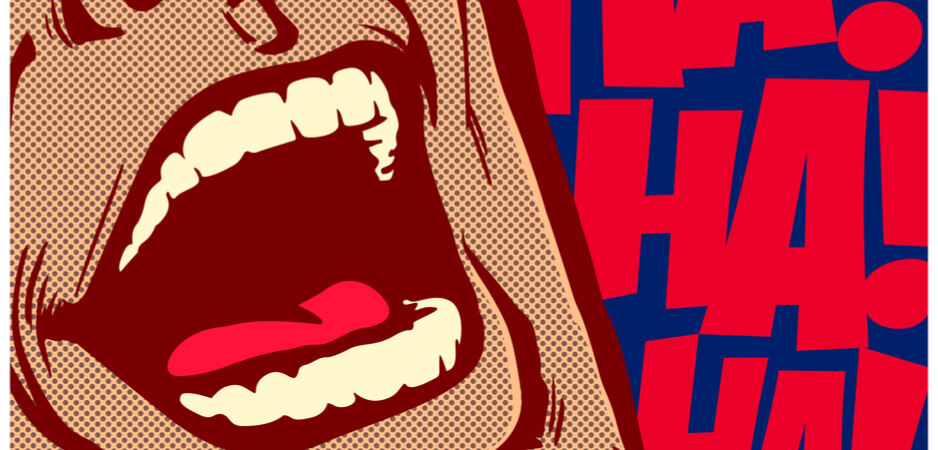Linking hate speech or extreme language with humor looks disturbing, since it is assumed that prejudice, intolerance and fanaticism are humorless per se.
Memes have a frequent presence in our daily lives. They flood our timelines on different social media platforms, usually to provide us with a smile. Originally, the term “meme” was coined by biologist Richard Dawkins in his 1976 book, The Selfish Gene, to describe the flow and flux of culture. The meme was born as a cultural counterpoint to the gene, since, for Dawkins, biological evolution has been surpassed by cultural evolution as a key factor of human behavior.
In Dawkins’s words, concepts so culturally broad like art, technology, language, art and religion are “memeplexes,” built from sets of several micro-level memes. Memes are multimodal artifacts that combine image with text, usually have an uncertain and popular origin, no attributed authorship and are perfect examples of participatory media since readers are free to reproduce, appropriate and modify them.
From the point of view of discourse, memes are “constructions used to articulate argumentations” that have two main features. One is the presence of a cultural element (with a communicative intention), and the other is the presence of humor, almost always a joke (or a remark intended to be funny). Memes may adopt different formats, from the very popular macros rage comics, remixed images or comics, among others.
Although, at least in origin, memes were associated with jokes, the truth is that humor is a very controversial concept. The possibility of linking hate speech or extreme language with humor looks disturbing, to say the least, since it is assumed that prejudice, intolerance and fanaticism are humorless per se.
However, Christie Davies, in his book Ethnic Humour Around the World, argued that those who tell ethnic jokes do not necessarily have to share the stereotypes the jokes express. Thus, Davies establishes a distinction between the mischievous tone of jokes and the seriousness of anti-Semitism. When jokers are challenged, they have the possibility to draw back using the defensive excuse “I was only joking,” as Deborah Tannen pointed out.
What is clear about humor is that it is used to establish solidarity within social groups as well as to draw the boundaries between them. This is the reason why a kind of humor is enjoyed by the members of a given group and not by the ones out of it.
Internet Cosmos
The internet cosmos is full of hate or extreme speech. The World Wide Web is actually a paradise for racists who can be brave behind the protection offered by the screens of their computers where they feel secure and minimize the risk of exposure. They can say what they really think without fear of losing face within the social groups they belong to, often using a fake identity to release their real self.
Social media applications such as Facebook or Twitter have become the agora for attacking, mocking, insulting, denigrating and humiliating members of the LGTBQ community, women, black people, native Americans and Jews, among many others. Muslims have been one of the most targeted groups, giving way to the so-called cyber Islamophobia, or irrational hostility toward Muslims and Islam expressed online.
Even though many of those attacks come in written form, there is a wide range of anti-Muslim memes. In a 2018 study I carried out on 150 anti-Muslim memes retrieved mainly from Twitter and Google images, the most numerous memes perpetuated the different stereotypes usually attributed to Muslims. These include the oppression of women in Islam, the inherent violent nature of Muslim men, the aggressiveness of the religion itself, their taste for pedophilic or zoophilic practices, a potential to become terrorists, the lack of intelligence of the followers of Islam (mocking aspects such as the 72 virgins) and the threat posed by the concept of multiculturalism perceived as a Trojan Horse in the Western world.
The type of memes in which a text is superimposed on an image is called macros. Usually, it is the written text that carries the anti-Muslim message. One example depicts the recurrent stereotype that Muslims are generally pedophiles who marry very young girls. In this kind of meme, the image is centered and framed by two sentences; the one on top gives a general statement, while the one at the bottom provides the “humoristic” twist: “My wife called me a paedophile. That’s a big word for a 9 year old [sic].”
Another example of gendered Islamophobia is a meme in which a woman wearing a burqa is visually compared with the garbage bags next to her. The question of the loss of individual identity of women in Islam is targeted in the meme through the dehumanization of the object via visual analogy.
Memes are extremely efficient means of spreading hate since images have a great impact on the viewer, and the ideological content is provided by the short message that accompanies them. Even more, the fact that memes are mainstream products of popular culture make their hate content pass unnoticed by some readers who will just focus on the “funny” side without adverting the hateful content.
Readers do not have to make a great effort to decodify the message, and the very nature of memes makes them products to be shared, modified or easily altered because to their uncertain origin and lack of copyright restrictions. Thus, the speed of dissemination, impact and reach of memes are extremely high.
Laughing at Your Own Clichés
However, in a very intelligent move, some Muslims resorted to the very tool of memes to counterattack the hate projected directed against them. In a counter-hate series of memes, Muslims dismantled the stereotypes attributed to them by reusing them with humor.
These memes show the popular “ordinary Muslim man” macro meme in which the main actor is a Muslim man wearing a taqiyah hat. The structure of the memes is always the same: The Muslim man occupies the center of the meme, which is framed by a sentence on top and another at the bottom that follow the bait-and-switch pattern. The first part of the sentence at the top always refers to any commonplace attributed to Muslims that acts as bait — “I want my wife to be fully covered” — and the bottom part switches the cognitive construction the reader has anticipated after reading the first part, smashing the stereotype — “by a comprehensive insurance policy.” Memes prove to be a very powerful reply to hate when the target group is the first one laughing at its own clichés.
Humor has proved to be a very powerful strategy to fight Islamophobia by reversing the expected reaction and changing the dynamics of communication. It acts to give cohesion to the Muslim community without offending the attackers. Readers, however, must be aware of the hate speech present in many elements of popular culture in subtle ways that, precisely because of that, may not be immediately obvious, but definitely permeate our lives.
*[The Centre for Analysis of the Radical Right is a partner institution of Fair Observer.]
The views expressed in this article are the author’s own and do not necessarily reflect Fair Observer’s editorial policy.
Support Fair Observer
We rely on your support for our independence, diversity and quality.
For more than 10 years, Fair Observer has been free, fair and independent. No billionaire owns us, no advertisers control us. We are a reader-supported nonprofit. Unlike many other publications, we keep our content free for readers regardless of where they live or whether they can afford to pay. We have no paywalls and no ads.
In the post-truth era of fake news, echo chambers and filter bubbles, we publish a plurality of perspectives from around the world. Anyone can publish with us, but everyone goes through a rigorous editorial process. So, you get fact-checked, well-reasoned content instead of noise.
We publish 2,500+ voices from 90+ countries. We also conduct education and training programs
on subjects ranging from digital media and journalism to writing and critical thinking. This
doesn’t come cheap. Servers, editors, trainers and web developers cost
money.
Please consider supporting us on a regular basis as a recurring donor or a
sustaining member.
Will you support FO’s journalism?
We rely on your support for our independence, diversity and quality.






